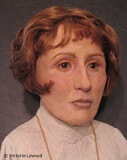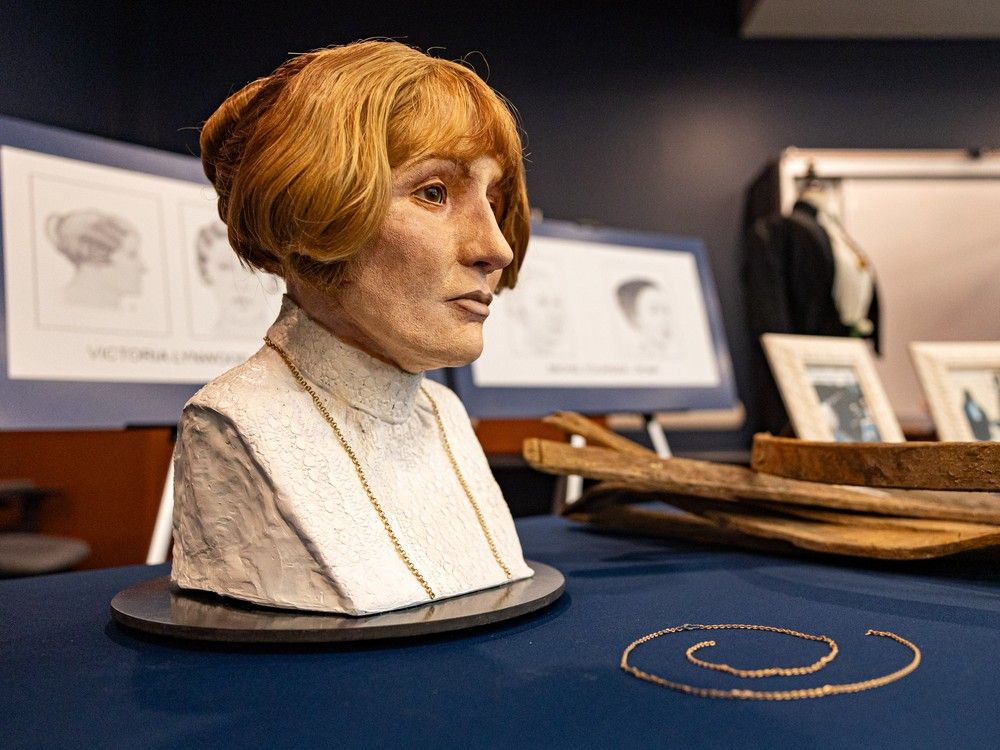498UFSK - Unidentified Female





Artistic renderings of the victim; Victim's jewelry and clothing
Date of Discovery: June 29, 2006
Location of Discovery: Saskatoon, Saskatchewan, Canada
Estimated Date of Death: 1920 to 1924
State of Remains: Skeletal
Cause of Death: Homicide
Physical Description
Estimated Age: 25-35 years oldRace: White
Gender: Female
Height: 5'1"
Weight: Unknown
Hair Color: Light brown to reddish brown.
Eye Color: Unknown
Distinguishing Marks/Features: Stocky build.
Identifiers
Dentals: Available. Evidence of peridontal disease. Jaw bone not located.Fingerprints: Not available.
DNA: Available.
Clothing & Personal Items
Clothing: Skirt, blouse, and an undergarment, possibly a corset. Clothing was for spring or autumn wear.Jewelry: An 18-karat gold necklace from European origin or an area of European influence, such as Montreal. The necklace was missing its pendant.
Additional Personal Items: Unknown
Circumstances of Discovery
The victim's skeletal remains were located in an abandoned well by a work crew that was excavating gas tanks at a convenience store on the east side of the city near Central Avenue and 108th Street. The remains were wrapped in burlap that looked like part of a bag and had been placed in a barrel. There was also evidence that the woman's left upper arm had been sawed off. Police also found a man's vest and pants on top of the remains, leading investigators to believe the woman might have been killed at the well.The victim's clothing, personal effects, and dental work put her time of death between 1900 and 1920, as well as point to her having been middle or upper class. Forensic investigations by the police and archeologist, Dr. Ernie Walker, narrowed the time frame between 1920 to 1924. Her clothing was typical of the 1908 to 1916 period. The well the woman was found in must have been abandoned at the time of her death, which suggests it happened after 1914, when Sutherland started getting water piped in from Saskatoon. In 1912, the Shore Hotel was built on the site where the remains would later be found. The building stood empty from 1919 to at least 1927.
At that time, Sutherland was a railway town of about 1,000 people. The town now is part of Saskatoon.
Saskatoon Police Services are determined to solve this case. You can help if you have a missing family member whose story fits the details and/or possibly recognize the face from old family photos.
Investigating Agency(s)
Agency Name: Saskatoon Police ServiceAgency Contact Person: Historical Crime Unit
Agency Phone Number: 306-975-8300
Agency Case Number: 2006-67978




